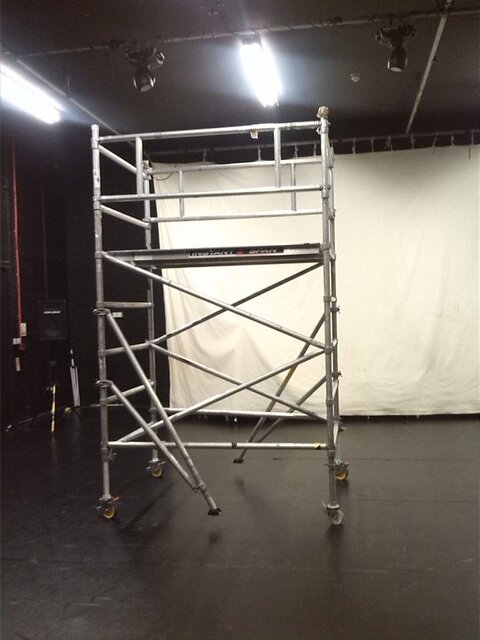Painterspoon
Member
Hello smart people!
I will be mounting a production of Jill Santoriello's "A Tale of Two Cities" in May 2014 with my high school students. I'm trying to work out set ahead of time. In the past, we've done a pretty standard mix of painted flats and periaktoi, with the odd moveable staircase.
The problem I have with going this route is that the set becomes a literal painted backdrop, eliminating the audience's imagination from the mix. There's also the purchasing of lumber and the time in painting and setup. I'd like to focus on small practical set pieces and strategic lighting to get the setting across. I also have a chameleon scrim and some 4' high portable stage sections which I can incorporate.
What I would like to do is rent scaffolding (the kind that they use to work on second levels of buildings, while people are able to pass through on the sidewalk below), use this as a perimeter (so the chorus can remain on stage, lurking in the darkness). I'd also like to be able to have a section or two on lockable casters, to simulate a few different settings. I was thinking, additionally, that I could rig up the odd Oleo drop across sections (e.g. to drop a flag or sign).
I should let you know that I am in Ontario.
Before I start thinking about actual design, what are my considerations in working with scaffolding?
I will be mounting a production of Jill Santoriello's "A Tale of Two Cities" in May 2014 with my high school students. I'm trying to work out set ahead of time. In the past, we've done a pretty standard mix of painted flats and periaktoi, with the odd moveable staircase.
The problem I have with going this route is that the set becomes a literal painted backdrop, eliminating the audience's imagination from the mix. There's also the purchasing of lumber and the time in painting and setup. I'd like to focus on small practical set pieces and strategic lighting to get the setting across. I also have a chameleon scrim and some 4' high portable stage sections which I can incorporate.
What I would like to do is rent scaffolding (the kind that they use to work on second levels of buildings, while people are able to pass through on the sidewalk below), use this as a perimeter (so the chorus can remain on stage, lurking in the darkness). I'd also like to be able to have a section or two on lockable casters, to simulate a few different settings. I was thinking, additionally, that I could rig up the odd Oleo drop across sections (e.g. to drop a flag or sign).
I should let you know that I am in Ontario.
Before I start thinking about actual design, what are my considerations in working with scaffolding?



